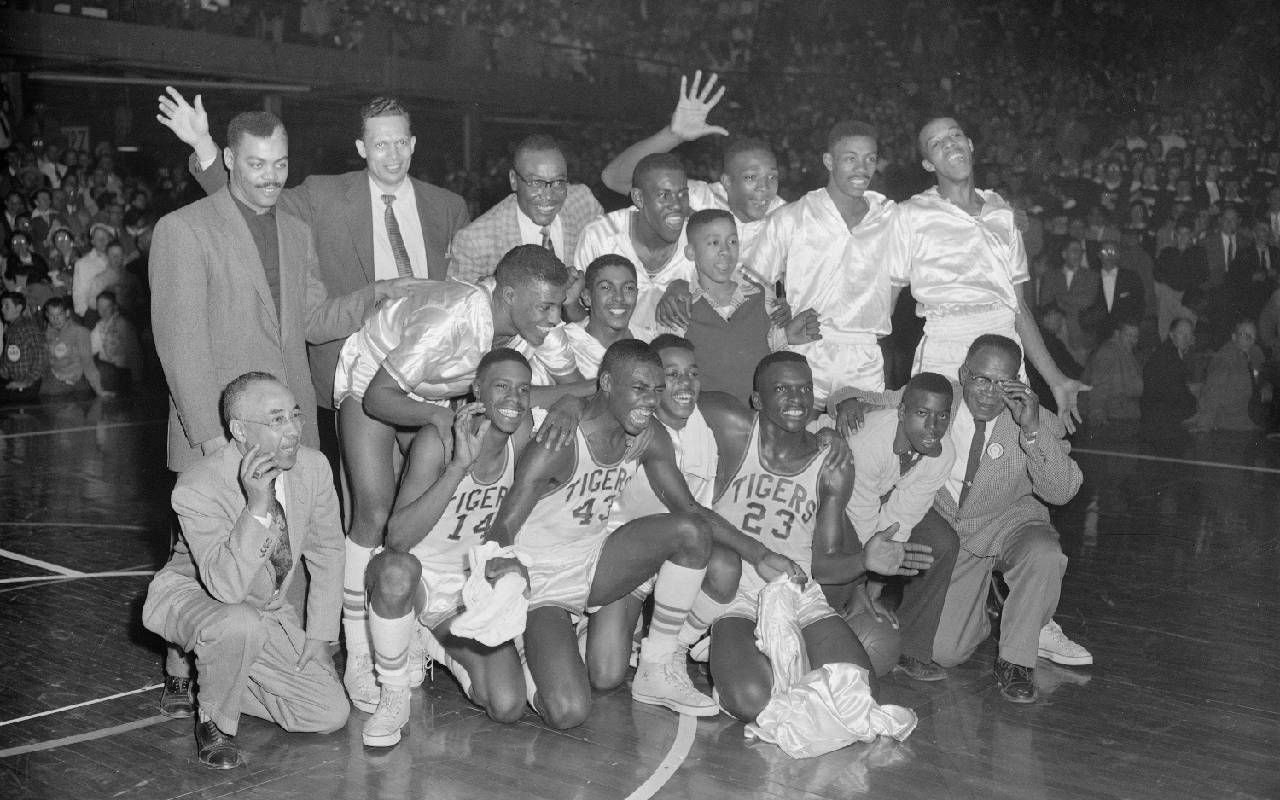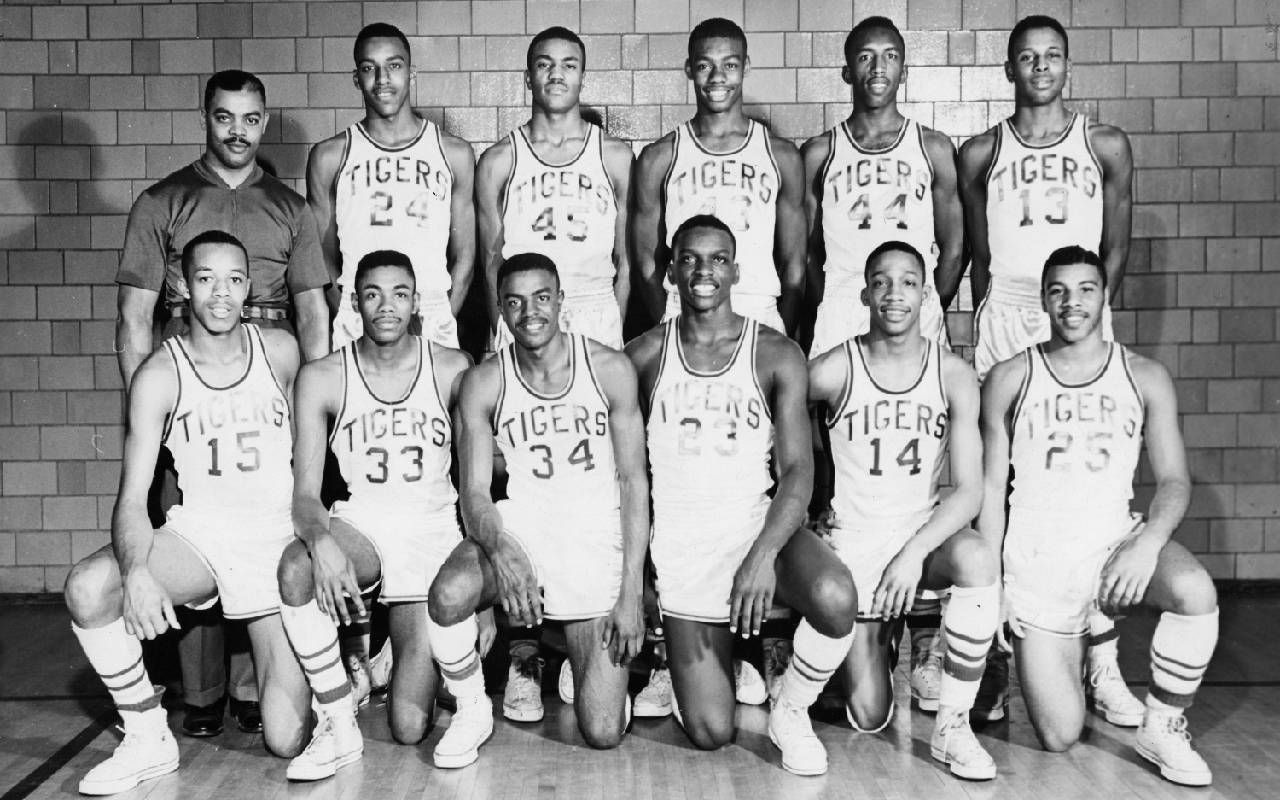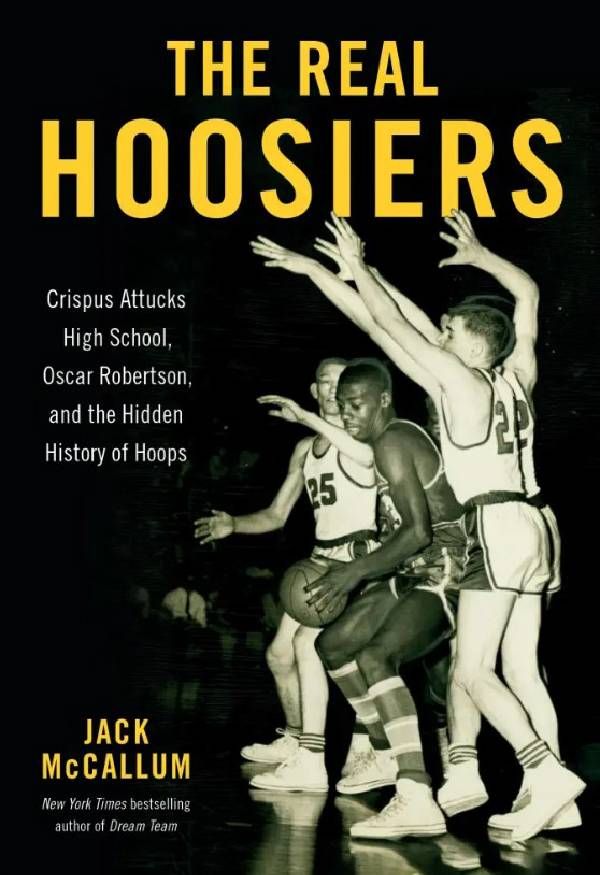A 'Hoosiers' Tale Untold, Until Now
A 1986 movie told how a rural high school overcame hardships to become champions. The new book, 'The Real Hoosiers' tells the improbable story of what came next.
Whenever the journalist Jack McCallum talks with new writers about their shared craft, he urges them to look for the story, not the result. When he set out to write a book about the boys' basketball team at Crispus Attucks High School in Indianapolis, he was careful to take his own advice.

Led by its brilliant star, future NBA Hall of Fame inductee Oscar Robertson, Crispus Attucks lost only one game from 1954 to 1956 and won back-to-back state championships in hoops-crazed Indiana. But that is not the story.
Indianapolis in the mid-'50s experienced a revival of the Ku Klux Klan, the racist terror group that Confederate soldiers founded after the Civil War to deny the vote and other civil rights to Black Americans. Klansmen used lynching, arson, torture and threats to undermine laws guaranteeing equality for Black citizens because, as McCallum observes, custom beat law in Indiana.
All-Black Teams Were Rare
Bigotry was widespread. While white crowds reeled over all-Black Crispus Attucks on the basketball court, many of the spectators were likely to treat the teenaged players as less than human after the last buzzer sounded.
"There is no doubt that the 'Hoosiers' narrative has overtaken the real narrative"
McCallum 74, a star staff member at Sports Illustrated before writing classic hoops books such as "Dream Team," details Attucks' dominating performance during this tumultuous time in his sobering, insightful new book, "The Real Hoosiers."
The team offers a springboard for McCallum to explore the legal, cultural and historical obstacles Black Hoosiers faced — and their lasting impact. He talked with Next Avenue about why Attucks' accomplishments are submerged and what he learned writing this book.
This interview has been edited for length and clarity.
Hurdles to Overcome
Next Avenue: Why do you think Crispus Attucks is not as celebrated in the lore of high school basketball?
Jack McCallum: Number one, it's a case of the "Hoosiers" narrative (the story behind a 1986 movie about a small-town team winning the Indiana state championship in 1954), which is inescapable. It looks by the title like I was going in the face of the movie. That wasn't the intention. I would be a hypocrite if I told you I didn't like "Hoosiers." I did, and I'm an acquaintance of (screenwriter) Angelo Pizzo. There is no doubt that the "Hoosiers" narrative has overtaken the real narrative; that's certainly replicated in American history — white narratives overtaking Black narratives.

Number two, Oscar (Robertson, who played most of his storied professional basketball career with the Cincinnati Royals, and declined to speak with McCallum) has always been very suspicious, reluctant, perhaps understandably so, to surrender this story for public consumption. Part of that is justifiable and I can't say anything about it. Part of it, I think, is a mistake by him.
Number three, you can go back and find Magic (Johnson, a Hall of Fame player for the Los Angeles Lakers) in high school. You can find Larry Bird (a Hall of Fame player for the Boston Celtics) in high school. God knows you can find Michael (Jordan, a Hall of Fame player for the Chicago Bulls) in high school. This is a little far back to get the evidence that you need of this phenomenon. If people want to Google "Crispus Attucks Indiana State Finals 1955 state championship" you can get it on YouTube, but it's certainly not in the public mainstream.
Impressive Alumni
Bobby Plump, the real player who inspired the fictional character Jimmy Chitwood in "Hoosiers," is a celebrity in Indiana. The Indiana Pacers NBA team, wore jerseys honoring Hickory High — the fictional school in the movie — before honoring Crispus Attucks. You write that many Black landmarks in Indianapolis are gone. Do you think Indiana has embraced Attucks at all?
(Sighs, chuckles) No.
Indiana Avenue, which is where all this stuff was happening — Louis Armstrong played there, a lot of music teachers came out of that area — there's one thing on the block. There's the Madam C.J. Walker Legacy Museum. Her and the legacy of (Black Indianapolis) is down to that one building.

(Attucks) has experienced everything that an urban high school anywhere has gone through. It became irrelevant for a while. They finally closed it. It was a junior high. The athletic programs were suspended and finally came back as kind of a magnet high school, but it's not flourishing right now. It was subject to the same forces economically that beat down urban schools.
They had a Tuskegee Airman come out of there. They had a couple of generals and they had musicians and they had Oscar Robertson. Could I tell you that were it a white high school with all that historical weight attached, would they come out better on the other end? My answer is yes, but can I prove it to you?
Players' Pride
I just find it hard to believe that with Attucks' place in the history of Indiana, you would think it would be doing better now than it is. I can't think of any other reason than it was basically in an African American area of Indianapolis.
How do the players feel about all this?
I talked to four: Bill Hampton, John Gipson, Al Maxey, Willie Merriweather. They all feel a sense of pride that they were this important. They certainly feel they were overlooked, and the historical weight that should be attached to them, it was not there. They all went on in life and did things, but certainly they feel that they've gotten only a shell of the recognition that could have come by being on this basketball team and being part of this historic high school.
What did you learn about yourself writing this book?
Crispus Attucks comes to play basketball and it not only has Black players, it has all Black players. And it has a Black coach. And it has Black fans. And it has Black cheerleaders. And it has a Black band. So, all of a sudden, you come to this situation of something you've never seen before. Oscar writes in his autobiography, people literally thought that Black people grew tails after midnight.
A Cultural Explosion
There was a cultural explosion that showed up to play against those teams. Then they started to beat them, then they started to absolutely dominate them. So a different fear came on: 'The Blacks are taking over. It's never going to be the same. This way of life that we knew is dissipating in front of our eyes.' And that's the point when I started doing this research that it really resonated in today's times. You could substitute the word 'migrants' or 'immigrants,' with 'Blacks' for what was going on then. It's not an exact comparison, but it's certainly very close.
The big lesson was the more things change, the more things stay the same?

It was that and this fact that I constantly wondered, what would I have been like? How would I have reacted to Attucks if I was a kid back then? I didn't have to make that decision. From the time I was in kindergarten, I played sports and I played on the playground and I square danced in gym class with kids who were a different color. I came out of this feeling lucky that I had grown up in almost that same time period; I had just grown up a different way.
As we get older, our beliefs can become entrenched. How do you stay out of that trap?
When I came into journalism, the idea that my opinion mattered, compared on a large scale to what I was supposed to be doing as a journalist, was just ridiculous. That natural inclination to ask questions probably leads you away a little bit from always thinking your way is the best way. The other thing is I have two sons who would be on my [tail] if I ended up as some entrenched old man. And I have five grandkids who would probably tell me the same thing.


